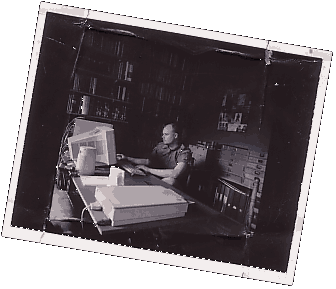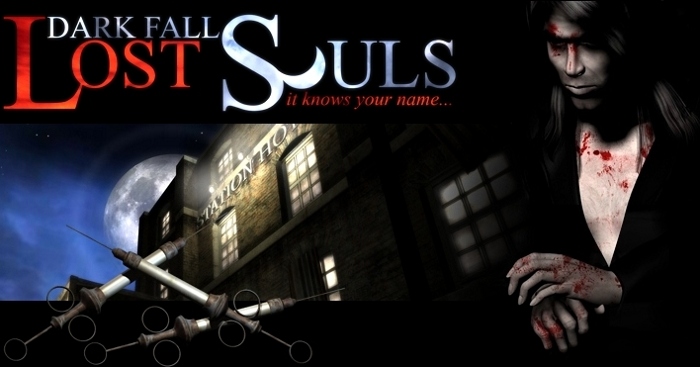
Name:
Jonathan Boakes
DOB: 07/11/73
Location: London, Cornwall, Scotland.
Current Employment: Self employed writer, games developer and interactive
media creator.
Personal quote: The Woods were lovely, deep and dark.....
Biog:
Jonathan Boakes was born in Kent, UK, on the 7th of November, 1973. The
family settled in Kent, after traveling from Cornwall to Wales and then
to South Yorkshire. This was due to following various industries around
the country, as Jonathan’s grandfather was a coal miner and later a worker
for British Steel.
Growing up in “The Garden of England” was
an influential era in Jonathan’s life, and would later play large roles
in his photographic and adventure game produce. Photography was his first
passion, and upon leaving school, he studied Photography and film studies
at West Kent College in Tonbridge. His time at college was fragmented
daily by long train journeys through “The Medway Valley”. The passing
countryside and small rural train stations would later influence work
such as 2001’s adventure game “Dark
Fall: The Journal”. Endless afternoons spent in the college library,
and hours exploring the local landmarks, were a highlight of this time
and peaked in 1992 when he exhibited the photographic collection “These
Modern Fields”. These photographs were an exciting and realistic profile
of modern rural England.
In 1994, Jonathan left the south east of England to live in London. Here
he pursued his photographic career, while working in a variety of other
work placements. London based exhibitions included “N:Code”,
“Underground” and “A Night in London: 1996”.
Following these highlights, Jonathan returned to education to explore
his new passion: Digital Media. This came about after witnessing the evolution
of the home computer from expensive hardware to affordable creator of
visual arts. In particular, Jonathan was drawn to PC adventure games such
as Myst. The ability to use the computer as a portal to other realms was
a delicious, intelligent and exciting experience, but it would be some
time before he began building games himself. Instead, visual digital montages
and fine art were produced up until 1998.
1997, Jonathan publishes “Ruin”, a graphic adventure game based around
an abandoned church in Pluckley, Kent (famous for its many ghosts). Part
college project, part independent production, “Ruin” was distributed to
new media houses around London, in the hope of gaining employment.
This happened quite quickly, and he began work for a large online content
production house in Hoxton, East London. Sadly, working in the digital
industry was not to be. The production of endless tedious advertising
banners, artificial “lifestyle” web portals and tacky illustrations wore
down Jonathan’s love of the medium. Rendering himself unemployed, he began
thinking about the possibility of creating new media (and especially
games) soon after, but trained as a sushi chef to earn those all important
pennies; London is not a kind city to the low earning aspirational artist!



Further interactive
material was produced (while filleting salmon and rolling Japanese finger
food) which included “Cortexa” and his graduation
piece “detektor”.
Both of these works were well received, with “Cortexa” being shown at
the Poitiers Film Festival in France to much
appreciation. A sequel to "Cortexa" was produced soon after, and can be
found here: "Forensic": Fictional crime scene
investigation software.
Bolstered by his peers, Jonathan began working on “The
Displacement”, an adventure game for the PC. Eight months later the
game was finished and released (on the newly formed XXv Productions label).
Sold online, the game was enjoyed by many a PC adventurer. This was the
best of times, and the worst of times. The work was good, but was not
paying enough to support further projects. So, Jonathan began work on
his first full and commercial project “Dark Fall”. Taking his love of
the countryside, strange rural locations, the supernatural and the existential
theories presented in fantasy series “Sapphire
& Steel”, Jonathan spent 18 months building the haunted train station
and hotel in Dowerton. During this time, Jonathan promoted “Dark Fall”
endlessly, which included artwork from the game being exhibited in New
York’s Digital Salon.
.gif)
“Dark Fall” was completed
in April 2002, and was immediately presented for global purchase via XXv’s
home PC. The game was a huge success, and earned itself a cornucopia of
fabulous reviews:

In May 2003,
Canadian/US games distributor “The Adventure Company” approached Jonathan
with the possibility of publishing the game professionally around the
globe. “Dark Fall” in now available worldwide in games stores, in several
languages. Naturally, production of another title, “Dark
Fall II”, began in earnest....
Released, in the US during September 2004, Dark Fall II (now renamed to
'Lights Out') was widely enjoyed, and earned great reviews and player
feedback. The game was a very different beast to the first Dark Fall game,
with a larger play area, integrated puzzles and a deeper mystery.

After completing the localised versions of 'Lights Out' (fully translated
versions of the game were released in France, germany, Italy, Spain and
Russia)
, Jonathan held three exhibitions in London & Cornwall. Titled 'monolith',
the exhibitions features fine art, photography and interactive media exploring
the Neolithic monuments of Cornwall, and the South West coast of England.
It was during this time that Jonathan met Matt Clark, who was working
on his own adventure title, known as Barrow
Hill. Featuring a stone circle, and a creepy setting, it was not long
before the two designers began discussing future projects, and potential
games. Within a couple of months, the decision was made (in Bodmin Moors
Jamaica Inn) to approach M.R.James "A
Warning to the Curious" as a possible contender for Jonathan's next
project. This would be a very personal project, as the story had haunted
Jonathan since childhood. You could say it helped form his perspective
of the English countryside, ancient sites/monuments and twice told tales.
Part of the initial research involved forming, and finding recruits, for
a modern ghosthunting team, known as "This
Haunted Land. Traveling the country, researching/investigating supernatural
events may seem a little bonkers, but the experience still proves invaluable
to Jonathan's writing, and influences the thoughts and faiths of all those
who take part. Many of the hi-tech investigations are written up, by Jonathan
himself. Some are tongue-in-cheek, others are downright frightening. All
investigations feature maps, photographic illustrations. Some feature
video, and audio recordings.

During this period, Jonathan also became involved in the sci-fi/fantasy
epic "Destinies.
Working with a screenplay by Jan Kavan, Jonathan was appointed 'Head of
GFX' (but prefers 'Artistic Direction' which sounds less bossy!), and
began sculpting the world of Anthranella (no, not a retirement home for
drag queens!). Matt Clark was able to offer assistance with conceptual
art, which helped form the unique, and startling world planned for this
exciting 3rd person adventure game.

By December 2004, pre-production on Jonathan's own new game (which had
now gained the working title 'The Lost Crown'), had begun, with hundreds
of applications for outside filming. Camera crews would be filming across
the East Anglian coastline, and also the South West. It was becoming obvious
that the new project was vastly different to Jonathan's previous work,
and would be taking his writing and designing skills in a new direction,
and towards different technologies.
Featuring a full, and detailed, cast of virtual actors, The Lost crown
would be a cross-between a modern fairytale, and a gothic television serial
from the 1970's. Creating the cast offered new challenges, and steep learning
curve. A decision was made, at the start of production, to keep the game
as photographic as possible. Why re-build the English coastline in CGI
when the real version could offer so much, if artfully used. Digging out
the Thames & Hudson artbooks, and his Derek Jarman dvd's, Jonathan set
to work crafting his vision of the East Anglian coast, complete with black
crows, gravediggers and ominous landscapes.
The first press release for The Lost Crown was dispatched on the 7th of
November, 2005. As the screenplay developed, and more screens began to
materialise, Boakes was busy creating 'making of...' pages, creating an
interactive map of the games 'real-world' locations and continuing his
research with This Haunted Land. Many of the newer ghost investigations
would make there way into the screenplay, in one form or another, making
the game as realistic, and as paranormally (un)sound as possible.

Production on The Lost Crown was completed over Christmas of 2007. A brand-new
Vista ready version was published in the USA in February 08, with Britain
and Europe following in the Summer of '08. The Lost Crown, although highly
unusual and quirky, quickly gained a following, and harvested a crop of
excellent reviews. The highlight being a 100% / A+ from JustAdventure.com.
Only a handful of other developers have received such recognition, making
3 years hard work all the more worthwhile. Jonathan himself, in his 'making
of...' states that "Part of my aim, when creating The Lost Crown,
was to present a melancholy, pastoral lament. A world that is both recognisable,
but invisibly threatened by 'progress' and time itself. Perhaps I fear
the landscape itself, something which I like to feel I know and love,
could become a ghost of its former self, under-appreciated by modernity".
Many could argue that the same description could be applied to adventure
games themselves, which is why, perhaps, the game was instantly a hit
with that community.
Jonathan Boakes, in the Summer of '08, announced, via his MySpace and
FaceBook, that work had begun on his next title. ....which, it appears,
will be a sequel to Dark Fall...Lost Souls.

The game was released, globally, in December 2009. Picking up several
awards, such as Best First Person Adventure from adventuregamers.com.
Lost Souls proved to be the darkest, and most macabre game from Jonathan
to date. Set back in the old train station and hotel at Dowerton, the
game follows a lonely Police Inspectors journey into hell, to find a missing
girl.
2013 - After a quiet period, developing and learning new technology and
creation tools, Jonathan relaunched
the Last Crown website with
news of the game development. After a noticable absence it was a positive
move to reveal new artwork, screens and story for the much anticipated
sequel to The Lost Crown.
The Last Crown - Blackenrock
Nigel Danvers is haunted. Ever since Halloween, after that brief but disturbing experiment with the Spiritboard, he has felt someone, or something, calling to him. What is the significance of the word 'Blackenrock'? Is it a name, an item, an event, a place?
Joining Nigel on his mysterious mission is fellow ghost-hunter Lucy Reubans. Together, they must delve deep into Saxton's murky past, to learn secrets long since buried by those that fear 'The Return'. Armed with upgraded ghost gadgets, they must seek answers from the dead and uncover a century old murder mystery.
The games will be released by Iceberg Interactive, to a gloabal audience, in 2014.
Blackenrock will take place before the events unfolding in The Last Crown: Haunting of Hallowed Isle, announced earlier by publisher Iceberg Interactive and currently also in development. The quadrilogy will be concluded with The First Crown.
Iceberg Interactive
CEO Erik Schreuder says: “All ‘Crown’ games will be
coming to Steam as well, and we’re currently very busy with putting
The Lost Crown onto the platform as soon as possible - and aim to announce
a launchdate for it in the near future.”
Written by XXv (now Darkling Room):
04/11/03
Last Updated: 06/04/2014





